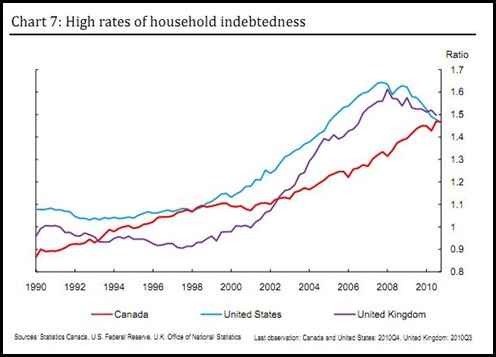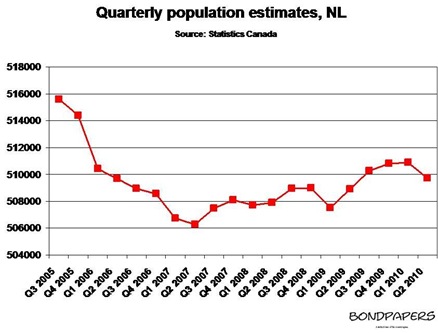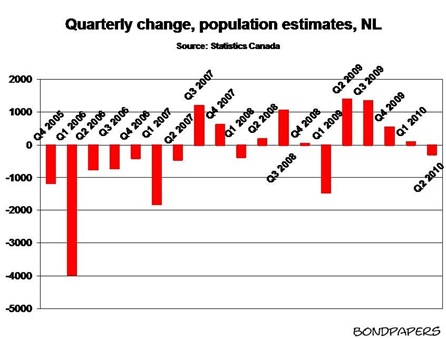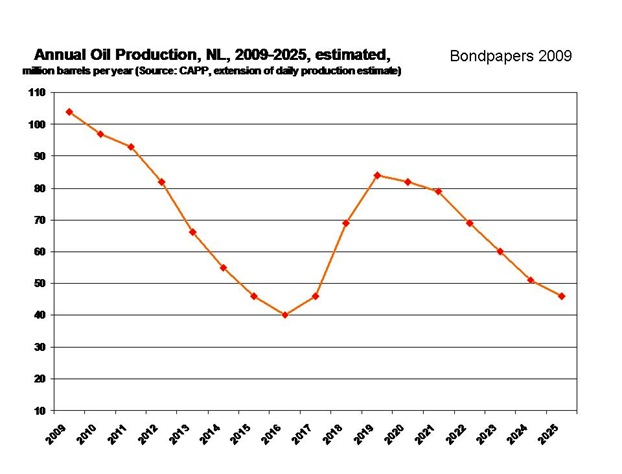We are in a bubble. I think we are in a protected bubble.
That’s Danny Williams making a few observations at the close of the most recent session of the provincial legislature.
It’s not the first time Williams talked about bubbles. He said the same thing in October 2008 as the world headed into the worst recession since the Great Depression in the 1930s:
We now, for the first time in our lives, are in a bit of a financial bubble and that's a wonderful thing. We have that protection and the people of this province got the support of the provincial government
Williams even claimed during that call to a radio open line show that “[h]opefully our [budget] surpluses will continue, hopefully they'll get even larger, it will enable us to do the things that we've been doing. I mean this, for us this hasn't happened overnight. We've been preparing for this.”
Then the talk of surpluses and bubbles disappeared.
You see, bubbles are wonderful things, all pretty and shimmery in the sunlight.
But bubbles are flimsy and insubstantial.
Bubbles have a distressing tendency to burst.
And in the case of the Williams economic bubble, the whole thing burst quite spectacularly. The provincial gross domestic product dropped 22% in 2009, or 10.2% in real terms as RBC assessed it. Deficit spending became the new order not just for the day but for the years to come and cabinet ministers openly admitted provincial government spending was unsustainable.
Now for those reasons alone it was nothing short of bizarre to see Williams return to the complete nonsense that somehow the province – let alone the provincial government – had emerged from the recession safely wrapped in some sort of bubble. It was even more bizarre to see Williams repeating this line:
However, when I look at what is happening here in Newfoundland and Labrador, the fact that we do have our debt reduced,…
It’s bizarre because it simply isn’t true. The total public sector liabilities remain as high in 2009 as they were at just about any point in the last five years. Even the net debt – government’s favourite misleading measure – increased as the 2009 cash shortfall sucked up a half billion dollars of cash the government had laying about and which had previously been used to offset government’s liabilities, even if only paper.
Williams went even beyond those crazy remarks, claiming that the previously unfunded pension liabilities had been addressed. Of course, that isn’t correct either. As Budget 2010 forecasts, the unfunded pension liabilities will increase in the current fiscal year just as the net debt will increase.
So aside from a decidedly unhealthy dose of self-delusion, it’s pretty hard to tell what the Premier was getting on with in the House of assembly only a month or so ago.
The prospect of a second and prolonged recession - widely discussed for some weeks now – only makes the premier’s claims that much harder to fathom. If the United States economy slows down again, then the Newfoundland and Labrador economy will follow suit. Williams’ own economic policies have seen to that.
If economist George Athanassakos turns out to be right, things in Newfoundland and Labrador could be even worse:
Economies are still extremely vulnerable to speculative bubbles and dips and increased volatility. The panic of 2008 and the subsequent rescue packages did not provide the necessary catharsis that recessions bring to economies. Demand for broader reforms has also waned as a result of the rescue of the economy from the panic of 2008. If this were not enough, economies have become addicted to low interest rates and to liquidity infusions.
Rather than being protected by a bubble, Newfoundland and Labrador may be more vulnerable to a second economic downturn than other parts of the western world. First of all, more and more of the local economy under the Williams administration is based on unsustainable public sector spending.* Second of all, the metro St. John’s area housing explosion - even as it subsides – has been built on public sector spending coupled with low interest rate policies. A second recession will likely kill both of those simultaneously.
Incidentally, the most recent figures from Statistics Canada suggest that the construction boom in Newfoundland and Labrador isn’t a commercial one.
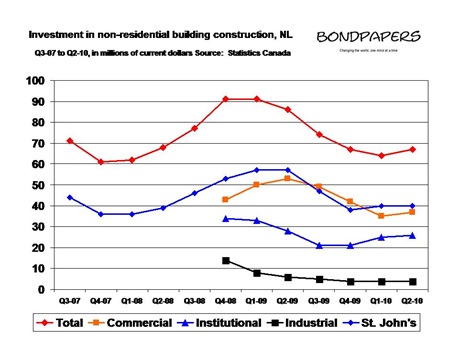 Investment in all categories of non-residential building construction peaked in mid to late 2008 and declined steadily in 2009 until it flattened for the past three quarters. The pattern shows up in the total provincial number (the long red line on top) as well as in the St. John’s-only line (the blue long line with diamond shaped data points)
Investment in all categories of non-residential building construction peaked in mid to late 2008 and declined steadily in 2009 until it flattened for the past three quarters. The pattern shows up in the total provincial number (the long red line on top) as well as in the St. John’s-only line (the blue long line with diamond shaped data points)
Even as spending on the Vale Long Harbour project, Hibernia South and Hebron ramp up in 2012, they won’t be able to offset a decline through all other sectors of the economy. And that’s even allowing that oil prices don’t drop thereby putting development of Hebron in some doubt.
The forest industry is a pale shadow of what it was even a half dozen years ago. The fishery is mired in restructuring talks. In any event, the industry is woefully short of the capital investment needed to sustain itself let alone retool for global competition. Destroying Fishery Products International and selling off its most useful and lucrative assets will prove to be one of several catastrophic policy failures of the current administration.
Mining may be doing reasonably well in the year ahead, but a second global recession will also adversely affect commodity prices. Even if oil prices remain at current levels, declining production over the next two to three years will reduce government revenues significantly.
Meanwhile, provincial government cash deficits in 2010 and again in 2011 would rapidly eat up whatever cash reserves are on hand. A significant economic downturn through the latter half of 2010 and into the 2011 election could force the government into a difficult financial position likely meaning spending cuts and wage freezes.
The province is not protected by a bubble. It is subject to the same forces that affect the rest of the world. Far from insulating the provincial economy from global forces, government policy has left the province in a more precarious position than it has been in two decades.
That’s the thing about bubbles. Like delusions, they have a tendency to burst in the most unsettling way imaginable.
- srbp -
* The growth in the provincial public service in recent years is not just a relative growth owing to a decline in other sectors, like forestry. From labradore:
In the past decade, the absolute numbers of people in NL who work in the provincial public sector — the provincial civil service, public health care, social service, and education system, and public post-secondary education institutions — has increased by 35%. Not only is that the largest increase, start to finish, of any of the ten provinces, for most of the decade, NL has topped the chart in terms of the growth rate. And, starting in 2006, that growth curve spiked steeply upwards, with annualized growth of up to seven percent per year, unmatched by any other province except, starting in the second half of 2008, Prince Edward Island. [Emphasis added]
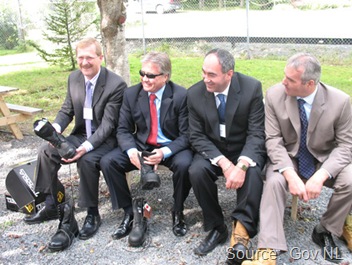 The provincial government communications people circulated a picture of the four at the time - from left, Jerome Kennedy, Danny Williams, Paul Oram, and Trevor Taylor – as they tried on some of the boots made at the plant. Every one is smiling. The $8.0 million in taxpayers’ cash was supposed to help the company add another 50 full-time jobs on top of the 170 at the plant.
The provincial government communications people circulated a picture of the four at the time - from left, Jerome Kennedy, Danny Williams, Paul Oram, and Trevor Taylor – as they tried on some of the boots made at the plant. Every one is smiling. The $8.0 million in taxpayers’ cash was supposed to help the company add another 50 full-time jobs on top of the 170 at the plant.

